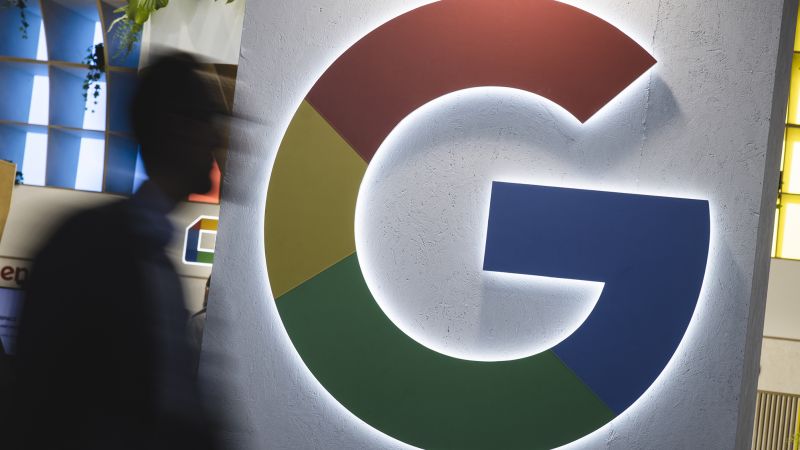- Inside AI
- Posts
- The future of AI & Search
The future of AI & Search
beat your competition via Programmatic AI SEO

There’s been a lot of talk recently about Search & SEO dying. Those kinds of statements get a lot of clicks, but Search is not dying any time soon. We’ll take a deep look into how you can actually leverage AI to outrank your competition.
In today’s email:
The future of AI & Search: A look at how AI will shape search in the near future
Programmatic SEO with AI: A practical guide from Petr Royce
Top 5 posts from last week
The future of AI & Search
Here is my take on the future of search and SEO.
It is clear that AI is a technological shift, that will impact every industry imaginable. If you are reading this, congratulations, you are ahead of the 99% of people that do not understand what is coming. And it’s coming fast.
On the other hand, AI is not going to take away search and search results any time soon. Let me explain.
GPT-type chatbots that are being integrated into Bing, Google, Baidu, and others will change the way a large portion of people search for results on the web.
And companies that are focused ONLY on generating traffic through SEO will be in a lot of pain, because the result of what you are searching for will no longer require you to go to the website, to find the answer.

But this is actually better for the companies that are creating valuable content. If you’ve ever searched for a food recipe, you know that you have to first sift through a long story that has nothing to do with the result you are looking for. This is done so that the search engines rank the website higher. And this is not what we, as users, actually want.
So the experience for us, users, will be better. And where it will be relevant, the search engines will still link to the websites - and they will find a way to show ads in those results because that is how they make money.
Using only the AI-generated output would be like shooting themselves in the foot.
So what to focus on, if you are a maker and don’t want to put all your eggs in one SEO basked?
Gated content
AI models are built with data, which is openly available. In the future, people that are creating content will lock it (think Facebook → you have to log in before you see most of the posts). That way the AI tools can’t use that data.
Paid subscriptions
Ads have been a generous revenue source for many business owners. Once the ad revenue starts to decrease, they will look to other options. I believe paid subscriptions for premium content (like Substack for example) will increase substantially.
Influencers will become more important
As people get served with the results automatically, Influencers will become more important. They will have more influence. If you are building a brand, build a personal brand as well.
Points of view will matter
We like points of view. And AI does not have that (yet?). So people will go to websites to get the points of view they are looking for. Say you are a Trump supporter, you can get the news from Google News, but you would go to a specific website that aligns with your view.
Communities
I am big on communities. Reddit. Inside Twitter. Custom communities. Discord, Telegram, you name it. As Ai moves more and more into our lives, we will look for deeper connections with our peers. I believe we will see a rise in communities, where content is created and information is exchanged.
Keeping that in mind, below is a post on how you can use AI and Programmatic SEO to rank for thousands of keywords utilizing OpenAI + Google Sheets.
Programmatic SEO with AI: A guide
This is a cross-post from Petr Royce’s Newsletter - a good friend of mine. He is the CMO of a unicorn Fintech from Scandinavia and writes about real-life experiments using AI. Consider subscribing if you like the post.
I’ve been doing some tests with Programmatic AI. There is plenty of free databases but they usually don’t have good enough descriptions or something is missing. You can also go for paid databases but I barely see a good database that would be below $250. Which is not in line with the $200 spend I set at the start.
What Is Programmatic SEO
Programmatic SEO is an approach to generating vast amounts of unique, high-quality content using a template and database. This strategy aims to replicate the same level of detail and accuracy found in manually published articles, but on a much larger scale - potentially reaching millions of readers.
The benefits are:
You win large amount of keywords at scale
Produce quality content quickly
Get quicker results
The downsides are:
Indexing is more difficult
High risk - if you don’t prepare your content well it may hurt your site
To translate programmatic SEO from abstract language, imagine that you’ve launched a product review site and you found a database of products - let’s say 5000 of them. Writing content for 5000 products would take you well over 2 years and you’d have to write at least 5 articles a day. There must be a better way, right? Yes, there is using programmatic SEO when you import large amounts of content to your CMS automatically.
An example of a company that uses programmatic SEO is G2.

How Can You Improve Your Ranking With Programmatic SEO and OpenAI?
One of the main downsides of Programmatic SEO is the high risk involved if you don’t prepare your content well. If you find a free dataset (and even paid one), you should assume the dataset was already used. Meaning if you don’t do changes you’ll be creating duplicate content. Back in the day, this was handled by spinning content and other ways to make content appear unique.
But with OpenAI GPT-3, you can create your content by either writing a new one or rewriting the one in the dataset. And the good news is, you don’t need any programming knowledge. You can go full no-code with just Google Sheets.
Where to start? A practical guide
Have your dataset ready in CSV and import it into Google Sheets. When you’re ready, go to Extensions→Add-ons→Get add-ons and search for GPT. I personally used only the first one so far.

Install the plugin and proceed to set it up by adding your GPT-3 API key. Once you input the OpenAI GPT-3 API key, you should be all set to start.
Let’s say that you have a dataset with the name of a city and other parameters but you’re missing a description. Input the following prompt in the field where you want your description to appear:
=GPT("Write a long description about '"&A2&"'", ,0.4,400,"text-davinci-003")
You can amend the prompt to fit your needs as well as the temperature and max tokens. I recommend keeping the max tokens low, otherwise, it becomes a bit more expensive in relative terms.
Hit enter and wait for the description to appear. And there you go.

So simple, right? When you’re finished, you can proceed to import all the content in one go.
Start with small amounts only for tests. It can get relatively expensive if you have a large dataset. As an example, I have generated over 17 000 descriptions in about 3 hours for around $60. Not a high price but you don’t want to be paying it for content you’re not happy with.
Top 5 posts:
Build GPT from Scratch
In this video, Andrej Karpathy builds GPT from Scratch, in code. Very fascinating, if you have 2hrs to spare. Andrej was the Sr. Director of AI at Tesla and has just joined OpenAI.
IBM research dives into creating new antibiotics with AI
AI Flying fighter jets?
Google loses $100 billion after bad chatbot demo
Google vs Bing App Downloads

👋 see you in the next newsletter!


